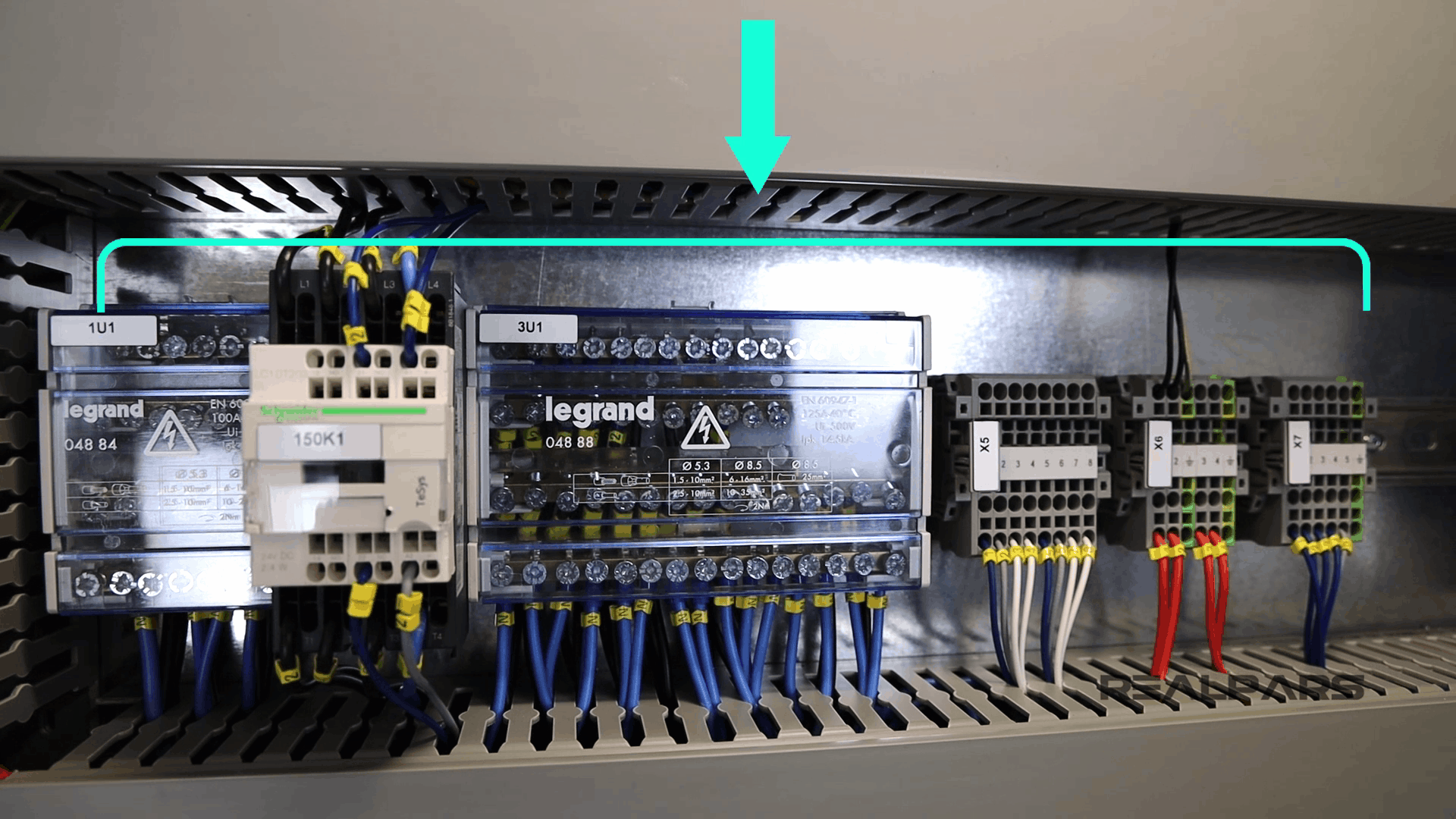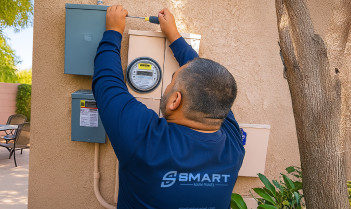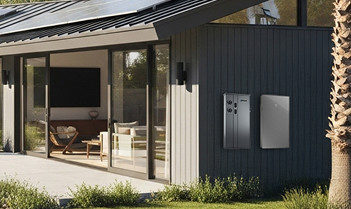
Date
How Do I Identify My Electrical Panel?
Have you ever found yourself staring at your electrical panel, feeling a bit overwhelmed and unsure where to begin? Identifying your electrical panel can seem daunting, but fear not! In this article, we will walk you through the process of identifying your electrical panel step by step. By the end, you’ll have the confidence to navigate your electrical panel with ease and ensure the safety of your home’s electrical system. So, let’s get started!

Introduction
When it comes to your home’s electrical system, the electrical panel plays a crucial role in ensuring the safe and efficient distribution of electricity. It is essential to familiarize yourself with the different types of electrical panels, understand their functions, and know how to locate and label them. Additionally, regular inspections, maintenance, and, if necessary, upgrades or replacements are necessary to ensure the safety and reliability of your electrical panel. In this article, we will guide you through the process of identifying, inspecting, and maintaining your electrical panel.
Common Types of Electrical Panels
Split-Bus Electrical Panel
The split-bus electrical panel is a type commonly found in older homes. It features multiple disconnect switches or breakers that control different circuits. These panels are known for their lack of a main breaker, which means shutting off power to the entire house may require turning off multiple switches or breakers. Split-bus electrical panels may not meet modern electrical code requirements and are often in need of replacement.
Fuse Box Electrical Panel
Fuse box electrical panels were widely used in older homes but have become less common in modern constructions. They feature screw-in fuses that protect the circuits from overloads. When a circuit experiences an overload, the fuse will blow, cutting off power to that circuit. Each fuse is sized to match the amperage rating of the corresponding circuit. However, fuse box panels can be inconvenient, as blown fuses must be replaced manually.
Circuit Breaker Electrical Panel
Circuit breaker electrical panels are the most prevalent type in modern homes. They feature circuit breakers that trip when a circuit is overloaded or experiencing a fault. Circuit breakers can be easily reset by flipping the switch back to the “on” position once the issue is resolved. These panels offer convenience and improved safety compared to other types, making them the preferred choice for residential electrical systems.
Locating the Electrical Panel
Identify Main Electrical Panel Location
The first step in locating your electrical panel is to find the main panel. In most homes, the main panel is located in the basement, garage, utility room, or an area near the electrical meter. Look for a metal door with hinges and latches. Inside, you will find the breakers or fuses that control the circuits in your home.
Secondary Electrical Panel Locations
In some larger homes or buildings, there may be secondary electrical panels located in different areas. These panels are known as subpanels and are often installed to accommodate additional circuits in certain areas of the house, such as a garage or an addition. Subpanels receive power from the main panel and distribute it to the corresponding circuits. Common locations for subpanels include workshops, home offices, or areas with high electrical demand.

Labeling the Electrical Panel
Understanding the Labeling System
Properly labeling your electrical panel is essential for quickly identifying and controlling the various circuits in your home. Start by locating the main breaker or disconnect switch, which will shut off power to the entire house. Typically, the main breaker is larger than the others and may be labeled as such. Each circuit breaker or fuse should also be marked with its corresponding location or purpose, such as “kitchen outlets” or “living room lights.”
Determining the Function of Each Circuit
To determine the function of each circuit, you can use a process of trial and error. Turn off one breaker or remove one fuse at a time and observe which area of your home loses power. You can then label the breaker or fuse box accordingly. It may be helpful to have another person assist you by informing you when the power goes out in specific areas.
Updating the Panel Labels
If your electrical panel is not properly labeled or if you have made changes to your electrical system, it is essential to update the panel labels accordingly. Use a label maker or durable adhesive labels to ensure legibility. Take the time to include all relevant details, such as the location and purpose of each circuit, to provide clarity and ease of use. Properly labeled panels not only make troubleshooting easier but also reduce the risk of accidental power shut-offs.
Checking the Panel Manufacturer’s Information
Determining the Manufacturer’s Name and Model Number
To gather more information about your electrical panel, you can start by determining the manufacturer’s name and model number. This information is typically located on the panel’s door or inside the panel itself. Look for any labels or engraved markings that indicate the manufacturer. The model number can provide valuable information when researching details about your specific electrical panel.
Researching the Manufacturer’s Information
Once you have identified the manufacturer and model number of your electrical panel, conducting research can provide valuable insights. Start by visiting the manufacturer’s website or contacting their customer support for product information, specifications, and any known issues or recalls. It is important to stay informed about your electrical panel to ensure its safety, reliability, and compliance with current electrical codes.
Verifying the Electrical Panel’s Age
Finding the Electrical Panel’s Date of Manufacture
Knowing the age of your electrical panel is crucial for assessing its condition and potential safety concerns. To determine the date of manufacture, check for a date stamp or label inside the panel or on the back of the door. If the panel was installed during a home construction or renovation, check any available documentation for the date of installation. Additionally, consulting with an electrician can provide professional insight into the age of your panel.
Checking for Recalls or Safety Issues
While verifying the age of your electrical panel, it is important to check for any recalls or safety issues associated with its manufacturer or specific model. Electrical panels have occasionally been recalled due to design flaws, manufacturing defects, or safety hazards. Checking with the manufacturer, researching online, or consulting with an electrician can provide information about any safety concerns and necessary steps for ensuring your panel’s reliability and safety.
Inspecting the Electrical Panel for Safety Hazards
Identifying Signs of Wear and Tear
Regular inspections of your electrical panel are crucial for identifying signs of wear and tear that may pose safety hazards. Look for any visible damage, such as burnt marks, corrosion, loose wires, or frayed insulation. These issues can indicate overheating, electrical faults, or improper installation. Additionally, pay attention to any unusual sounds, such as buzzing or crackling, as these may also indicate potential problems within the panel.
Checking for Compliance with Electrical Codes
Electrical codes establish specific requirements and safety standards for electrical installations. Over time, these codes may change, and older electrical panels may not meet current standards. When inspecting your panel, ensure it complies with the local electrical codes applicable to your area. If you are unsure about the code requirements, consult with a licensed electrician who can assess the compliance and suggest any necessary updates or replacements to ensure your panel’s safety.
Consulting with an Electrician
If you have any concerns or doubts about the safety of your electrical panel, it is always best to consult with a professional electrician. Licensed electricians have the knowledge, expertise, and equipment to perform thorough inspections and identify any potential safety hazards. They can also provide guidance on necessary repairs, upgrades, or replacements to ensure a safe and reliable electrical system.
Upgrading or Replacing the Electrical Panel
Reasons for Upgrading or Replacing
There are several reasons why you may consider upgrading or replacing your electrical panel. If your current panel is outdated, unable to meet the electrical demands of your home, or does not comply with current electrical codes, upgrading may be necessary. Additionally, if you are planning significant renovations or additions to your home that require additional circuits, a panel replacement or subpanel installation may be needed.
Hiring a Professional Electrician
Upgrading or replacing an electrical panel is not a DIY project and should always be carried out by a professional electrician. A licensed electrician will ensure that the installation meets the necessary safety standards, local electrical codes, and manufacturers’ instructions. They will also handle any required permits and inspections, providing peace of mind that your electrical panel upgrade or replacement is done correctly and safely.
Permits and Safety Considerations
When upgrading or replacing an electrical panel, it is important to abide by your local building codes and regulations. In many cases, obtaining a permit is required to ensure compliance with safety standards and proper installation. A professional electrician will handle these permit requirements and coordinate any necessary inspections to ensure your panel upgrade or replacement meets all necessary safety considerations.
Maintenance and Care Tips for Electrical Panels
Regular Cleaning and Inspection
Regular cleaning and inspection of your electrical panel can help prevent potential issues and ensure its optimal performance. Use a soft, dry cloth to remove dust and debris from the panel and its components. Avoid using water or any liquid cleaning agents to prevent damage or electrical hazards. Inspect the panel for any signs of damage, loose connections, or unusual sounds. If you notice any problems, contact a licensed electrician for further evaluation and repairs.
Testing Breakers and GFCIs
Periodically testing the breakers and ground fault circuit interrupters (GFCIs) in your electrical panel is essential for their proper functionality. Use the test button on each GFCI and ensure it trips and resets correctly. Similarly, test the circuit breakers by turning them off and then back on to confirm they function properly. These tests can help identify any faulty breakers or GFCIs and prevent potential electrical hazards.
Preventing Overloading
Avoid overloading your electrical panel by being mindful of the electrical load placed on each circuit. Understand the rated amperage for each circuit and avoid connecting devices that exceed that limit. Spread out high-demand appliances and equipment across different circuits to distribute the load evenly. Overloading circuits can lead to overheating, tripped breakers, and potential damage to your electrical panel.
Proper Cable Management
Proper cable management in and around your electrical panel can prevent cable damage, reduce the risk of electrical fires, and make troubleshooting easier. Ensure that cables are neatly organized, properly secured, and free from any kinks or bends that can cause damage. Label or color-code the cables to easily identify their corresponding circuits. Avoid overcrowding the panel with excessive cables, as this can impede airflow and increase the risk of overheating.
Conclusion
Your electrical panel is the vital hub that controls the distribution of electricity throughout your home. By familiarizing yourself with its components, ensuring proper labeling, conducting regular inspections, and following necessary maintenance practices, you can ensure the safety, reliability, and performance of your electrical panel. If you have any concerns, always consult with a professional electrician, who will provide expert guidance and assistance in maintaining or upgrading your electrical panel for the optimal functioning of your home’s electrical system.



